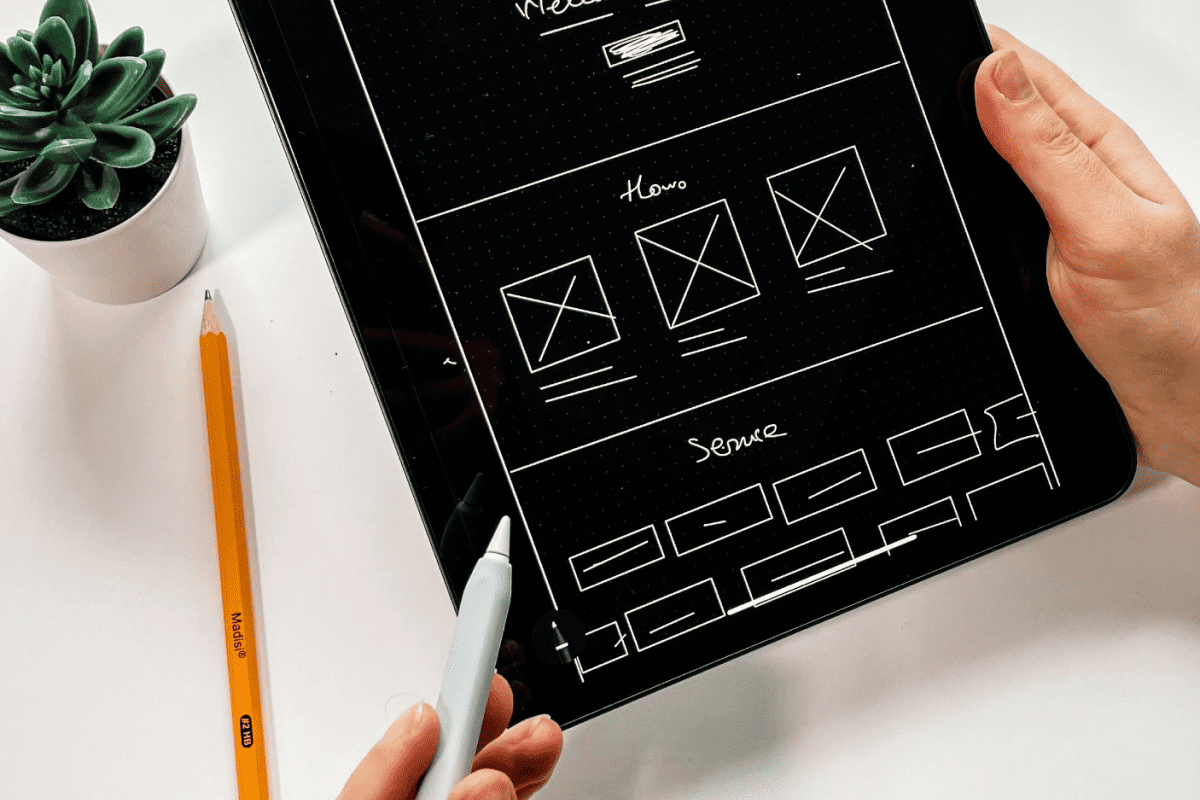Becoming a masterful designer is a quest that unfolds on two parallel tracks. On one path, we have the timeless fundamentals—the sturdy pillars of design that have stood the test of time, ensuring usability, clarity, and aesthetics. On the other path, we find the ever-evolving landscape of emerging design trends and cutting-edge technologies like AI, VR, and hyper-personalization. The question that often arises is this: How do we strike the perfect balance between mastering the fundamentals that underpin exceptional design and staying at the forefront of innovation? Well, let’s take a look…
Timeless UI/UX Standards
It’s essential to recognize that some fundamental principles remain steadfast. These timeless UI/UX standards have proven their worth in 2023 and are unlikely to undergo significant transformations in 2024. Let’s delve into these enduring principles that continue to guide the creation of exceptional digital experiences.
Usability Fundamentals
Intuitive Navigation
One of the cornerstones of a great user experience is transparent and predictable navigation. Users should effortlessly find their way around interfaces thanks to familiar elements like menus, buttons, and search bars. The goal is to ensure that users feel safe in the digital labyrinth.
Accessibility
Inclusivity is non-negotiable. Following accessibility guidelines, which include considerations like proper color contrast, screen reader compatibility, and keyboard navigation, is paramount. It ensures that digital interfaces are accessible to users with diverse abilities, making technology more inclusive.
Consistency
Maintaining a consistent design language across an interface is crucial. Consistency in design elements and patterns fosters familiarity, reducing cognitive load for users. Users can focus on their goals without distractions when elements behave as expected.
Visual Hierarchy
Effective communication relies on visual hierarchy. Size, color, and spacing guide users’ attention to essential elements and information. This hierarchy helps users understand the interface’s structure and prioritize their interactions.
Clear Error Handling
Mistakes happen; when they do, the user should not be left in the dark. Informative error messages and easy recovery options are essential components of an excellent UX. Transparent error handling ensures users can resolve issues quickly and continue their journey seamlessly.

User-Centered Design
Focus on User Needs
The core of user-centered design is understanding and addressing user needs and goals. Extensive user research should underpin the design process, ensuring that the interface is a solution to real problems users face.
Simplicity
Complexity is the enemy of usability. Simplicity in design leads to clean and uncluttered interfaces that avoid overwhelming users with unnecessary elements or distractions. A streamlined experience makes it easier for users to achieve their objectives.
Responsiveness
Digital products span various devices and screen sizes. Ensuring the interface adapts seamlessly to different platforms is a must if you intend to provide a consistent user experience. Responsiveness guarantees that users can engage with your interface anywhere, on any device.
Performance and Efficiency
Speed matters. Users expect interfaces to be fast and responsive. Minimizing loading times and delays enhances user satisfaction and keeps them engaged with the content rather than waiting for it to load.
Learnability
Giving users something easy to work with in an interface, especially for first-time visitors, is essential. A learnable interface reduces the learning curve, encouraging users to explore and interact confidently.
Takeaways
These timeless UI/UX standards provide a sturdy foundation for creating exceptional digital experiences. While technology and trends may evolve, these principles remain the bedrock of successful UI/UX design. It’s worth noting that even timeless standards can adapt to new technologies and user expectations. For instance, as voice interfaces and gesture controls gain prominence, intuitive navigation may take on new forms. The key is to stay user-centered and agile, allowing these standards to evolve harmoniously with the ever-changing technology landscape and user needs.
So, you want to be a designer…
When embarking on a journey to become a designer, it’s crucial to balance mastering the timeless fundamentals and staying abreast of AI and newer design trends. Both aspects are integral to a successful design career, and each serves a distinct purpose in your professional development. Let’s explore the significance of starting with the fundamentals and then delving into AI and emerging design trends.

Starting with the Fundamentals:
The Strong Foundation
Begin your design journey by mastering the timeless fundamentals. These principles form the bedrock of practical design and are essential for creating user-friendly and aesthetically pleasing interfaces. Familiarize yourself with intuitive navigation, accessibility, visual hierarchy, consistency, and clear error handling.
Building User-Centric Skills
Understanding user needs and solving their problems is at the heart of design. Prioritize user-centered design, emphasizing research and empathy. Learning to create interfaces that cater to real user needs is a skill that will remain invaluable throughout your career.
Cultivating Design Thinking
Design thinking is a problem-solving approach that designers use to tackle complex challenges. It encourages creativity, empathy, and iterative problem-solving. Developing your design thinking skills will equip you to approach design challenges with a fresh perspective.
Learning the Art of Simplicity
Simplicity in design is a timeless principle. Mastering simplifying complex ideas and interfaces will set you apart as a designer. A clean and uncluttered design can be compelling and engaging.
Nurturing Versatility
Building a solid foundation in the fundamentals allows you to be versatile in your design work. Whether you’re creating a website, mobile app, or physical product, these principles can be applied across various design disciplines.
Exploring AI and Emerging Design Trends
Staying Relevant
While fundamentals are the backbone of design, staying updated with AI and emerging trends ensures your skills remain relevant in a rapidly evolving field. AI-powered design tools and immersive experiences are becoming increasingly prevalent, making it essential to adapt.
Embracing Innovation
AI can enhance your design capabilities, from automating repetitive tasks to personalizing user experiences. Learning to incorporate AI into your workflow can amplify your efficiency and creativity.
Expanding Your Toolkit
Familiarizing yourself with the latest design trends, such as AR/VR integration and hyper-personalization, opens up new creative avenues. These trends can inspire fresh ideas and allow you to explore innovative approaches to design.
Meeting Client Expectations
Clients and employers often seek designers who can harness AI and incorporate modern trends into their projects. Being well-versed in these areas can make you a more attractive candidate for design roles.
Your journey to becoming a designer should begin with a solid foundation in the timeless fundamentals of UI/UX design. These principles are the cornerstone of practical design and will serve you well throughout your career. However, it’s equally crucial to stay curious and adaptable, embracing AI and emerging design trends to remain at the forefront of the industry. By balancing these two aspects, you’ll be well-prepared to navigate the ever-evolving design world and create innovative, user-centric experiences.

Unosquare is your UI/UX Partner
For those interested in top-tier UI/UX services, Unosquare is ready to support you. As industry pioneers since 2009, we’ve cultivated unparalleled expertise and delivered exceptional results. Our dedicated team, comprised of over 1000 seasoned professionals, has successfully crafted over 2500 distinctive digital solutions.
Look no further if you’re searching for cutting-edge UI/UX services that redefine user experiences. We invite you to explore our website and delve into our blog to discover the depth of our expertise and the innovation we bring to the UI/UX design world. With a global presence spanning the US, Canada, Great Britain, and Latin America, we can meet your needs worldwide.
Trust us to be your partner in creating remarkable digital experiences that leave a lasting impact. Visit our site today and embark on a journey that will elevate your UI/UX projects to new heights. Together, your vision our expertise will shape the future of design.

